
Key Points
- Fresh New Highs for Capital Markets Stocks
- S&P 500 and NASDAQ 100 Break Their Downtrends; Small Caps Remain Stuck
- 10-Year Note Breaks Support
- Commodities Are Strong but May Need a Breather
- Sentiment Shifts to More Greedy Than Fearful
Chart in Focus
While banks have been in focus over the past week as they report earnings, investors would be remiss if they were not paying attention to the fresh new highs for the S&P 500 Capital Markets Index. The group is in the midst of a five-day winning streak that has seen it retake the rising 50-day moving average and continue the uptrend that took hold last November.
The absolute breakout is confirmed by a new relative high for the group. After trading in a consolidation since June, the relative ratio has broken to the upside, putting Capital Markets stocks in a leadership position, above the rising 50-day moving average.
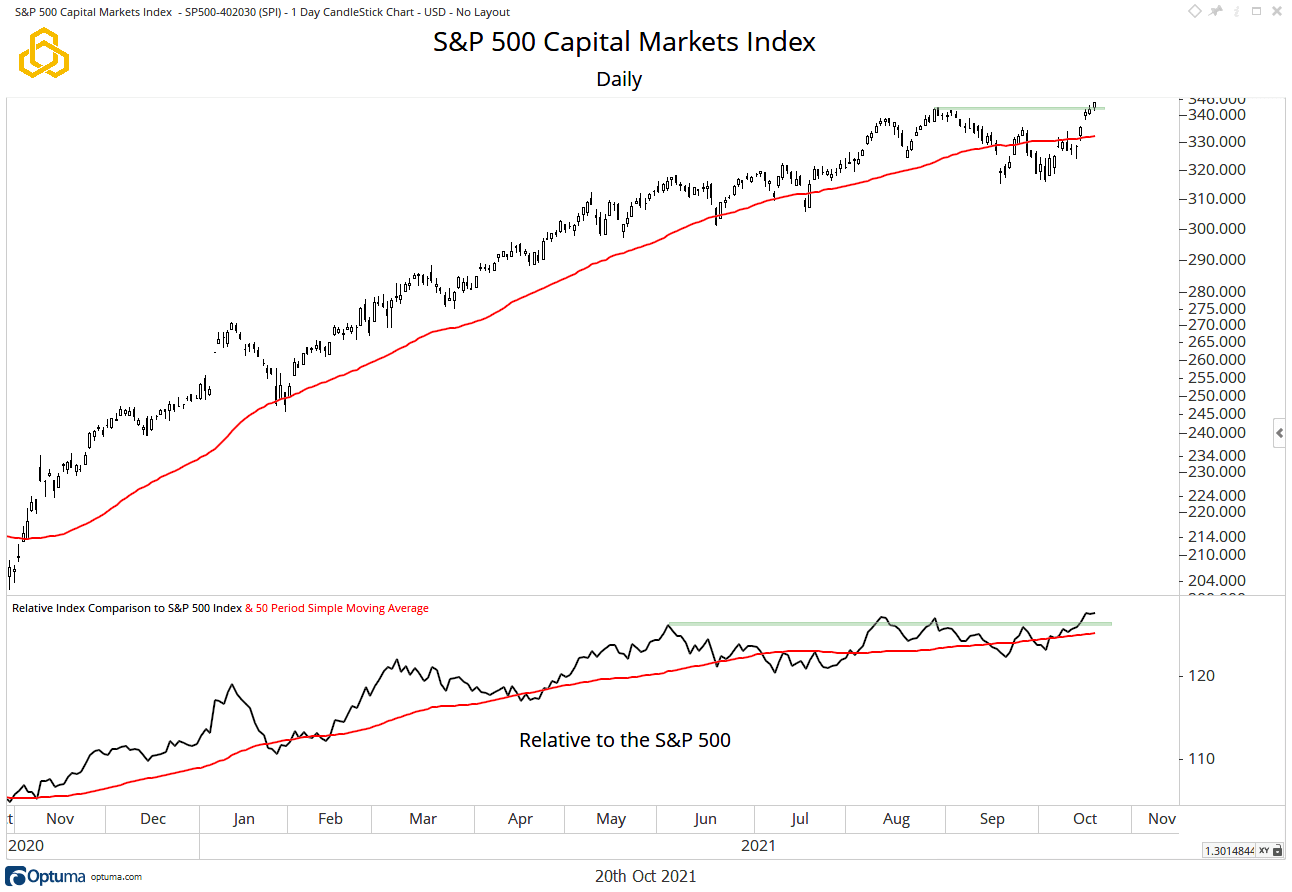
Mid-Week Market Update – United States
After a strong rebound from the 100-day moving average (blue) over the past week, the S&P 500 is within striking distance of the record highs set in early September. The index has broken back above the 50-day moving average and, importantly, has broken the short-term series of lower highs and lower lows that had begun to develop. These data points signal that the S&P 500 is likely resuming its uptrend and increase the odds that new highs are on the horizon.
We have noted that the 14-day RSI did not become oversold as the index pulled back. We want to see this indicator trade to overbought levels as the index trades toward new highs to increase confidence that the uptrend is supported by momentum.
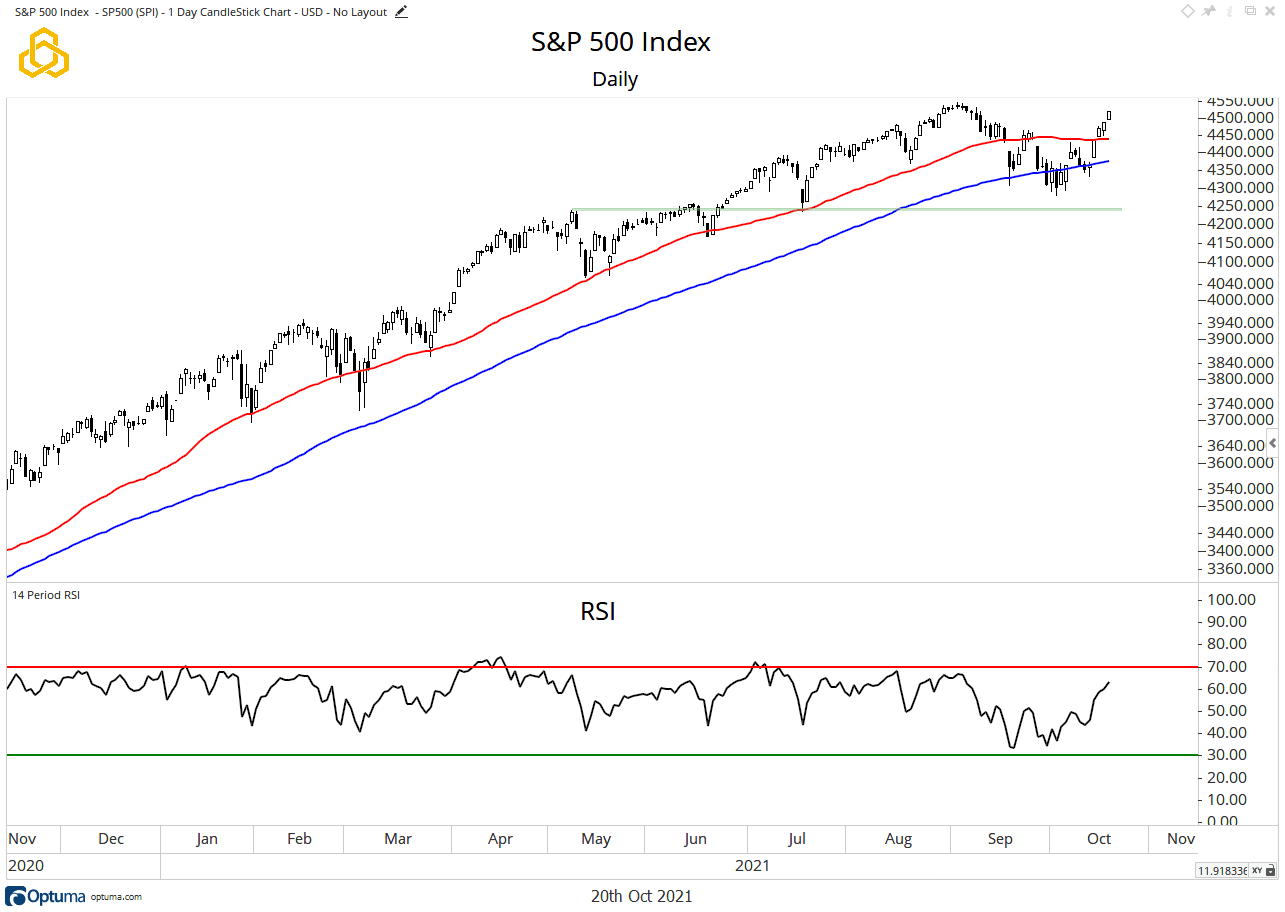
While we truly wish there was something different to say about the S&P Small Cap 600, we are not going to “make things up.” The index remains in the consolidation that has marked trading since March, sightly above a 50-day moving average that has been flat for months. Support is near 1,250, while resistance is around the 1,400 level. The 14-day RSI confirms the consolidation, as it trades in the middle of the range.
Relative to the S&P 500, Small Caps are testing the 50-day moving average while remaining above important support. Breaking these two levels would signal that the trend of underperformance that began in March is continuing.
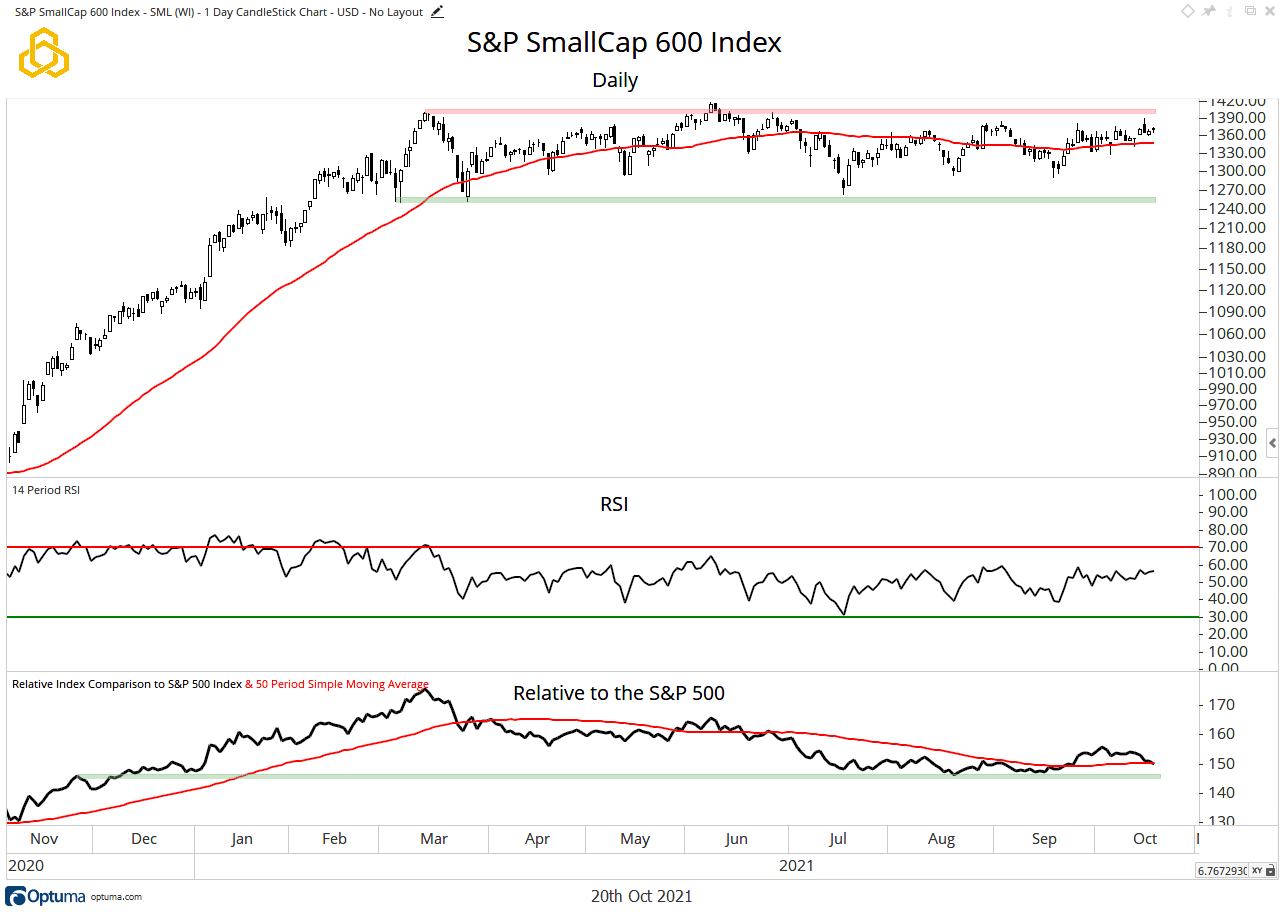
Just as investors were ready to give up on it, the NASDAQ 100 has staged a strong move to the upside over the past week. As with the S&P 500, the series of lower highs and lower lows has been broken, and the index has retaken the 50-day moving average (red) after finding support at the rising 100-day moving average. The 14-day RSI has broken its downtrend, but now the real test begins. Can this metric move to an overbought condition to signal strong upside momentum, or will it fade from here to remain in a bearish regime?
On a relative basis, the NASDAQ 100 is testing price-based resistance and the 50-day moving average from below. These levels must be broken to signal that this index is once again taking a leadership position. It is not there yet.
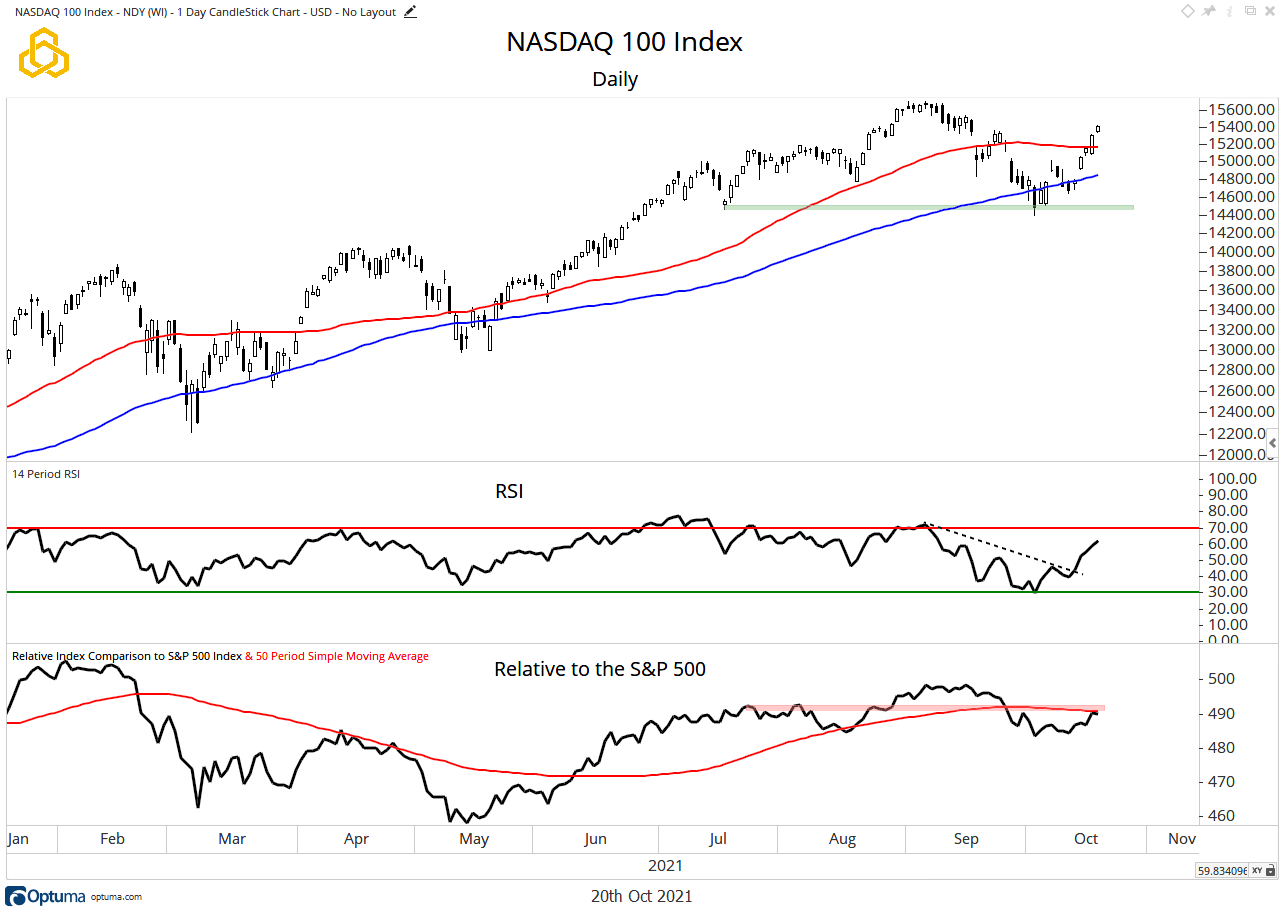
The 10-Year Note is breaking down (rates are moving higher) as support at the 131 level gives way. The rebound that we thought was possible last week endured for two days before sellers again took control. The Note remains below the declining 50 and 100-day moving averages, and a “death cross” is now in place. We continue to see the path of least resistance as to the downside if the Note is below the moving averages. This view is confirmed by momentum, as the 14-day RSI is solidly in a bearish regime, trading near oversold levels.
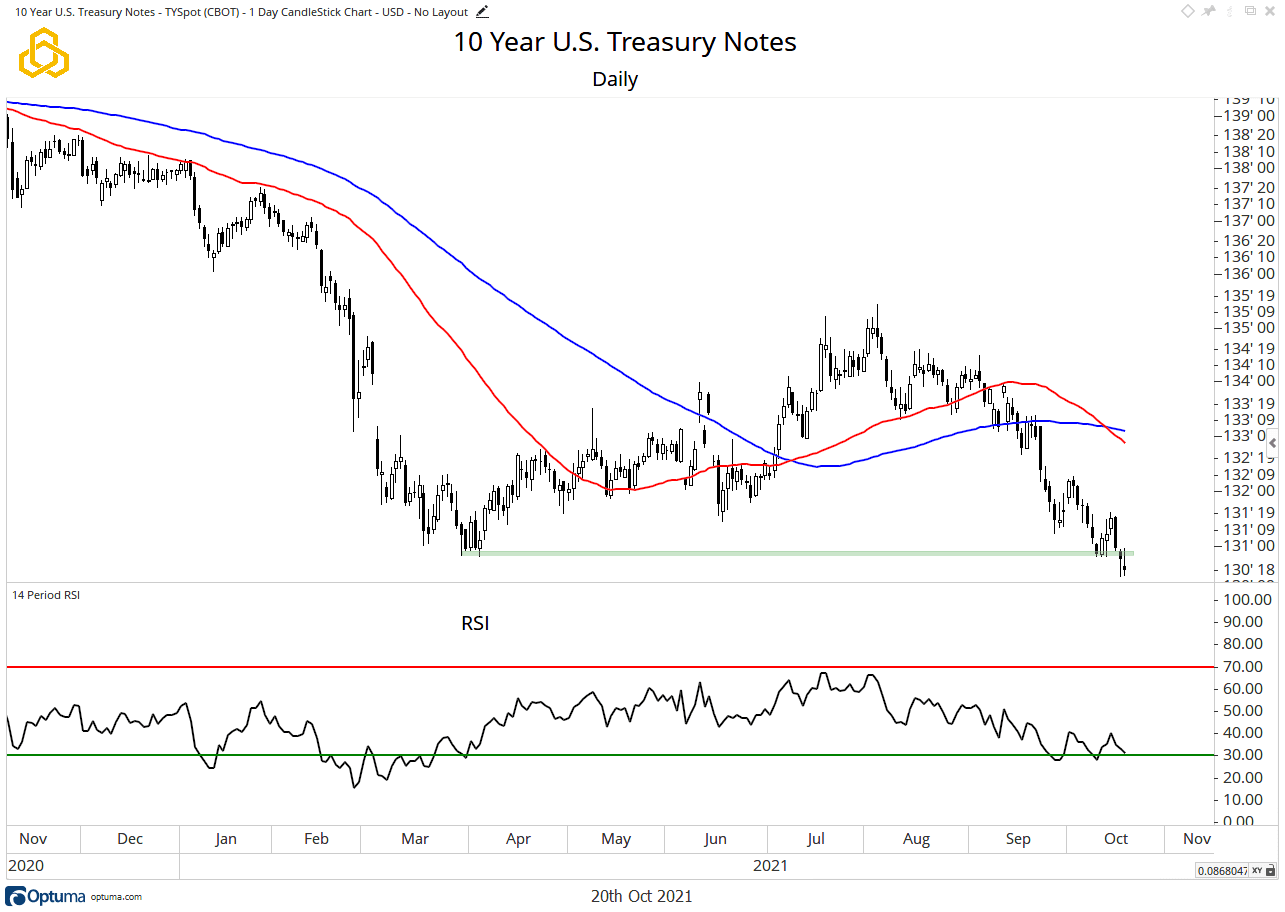
The Bloomberg Commodity Index continues to power to the upside. The bulls are clearly in control as the index is firmly above the rising 50 and 100-day moving averages, but it would not be surprising to see a pause here. Should a near-term pullback take hold, we would expect the 100 level to be defended. Below that, the moving averages should provide a zone of support where buyers will likely become aggressive once again.
Momentum confirms the bullish price trend, with the 14-day RSI near overbought levels.
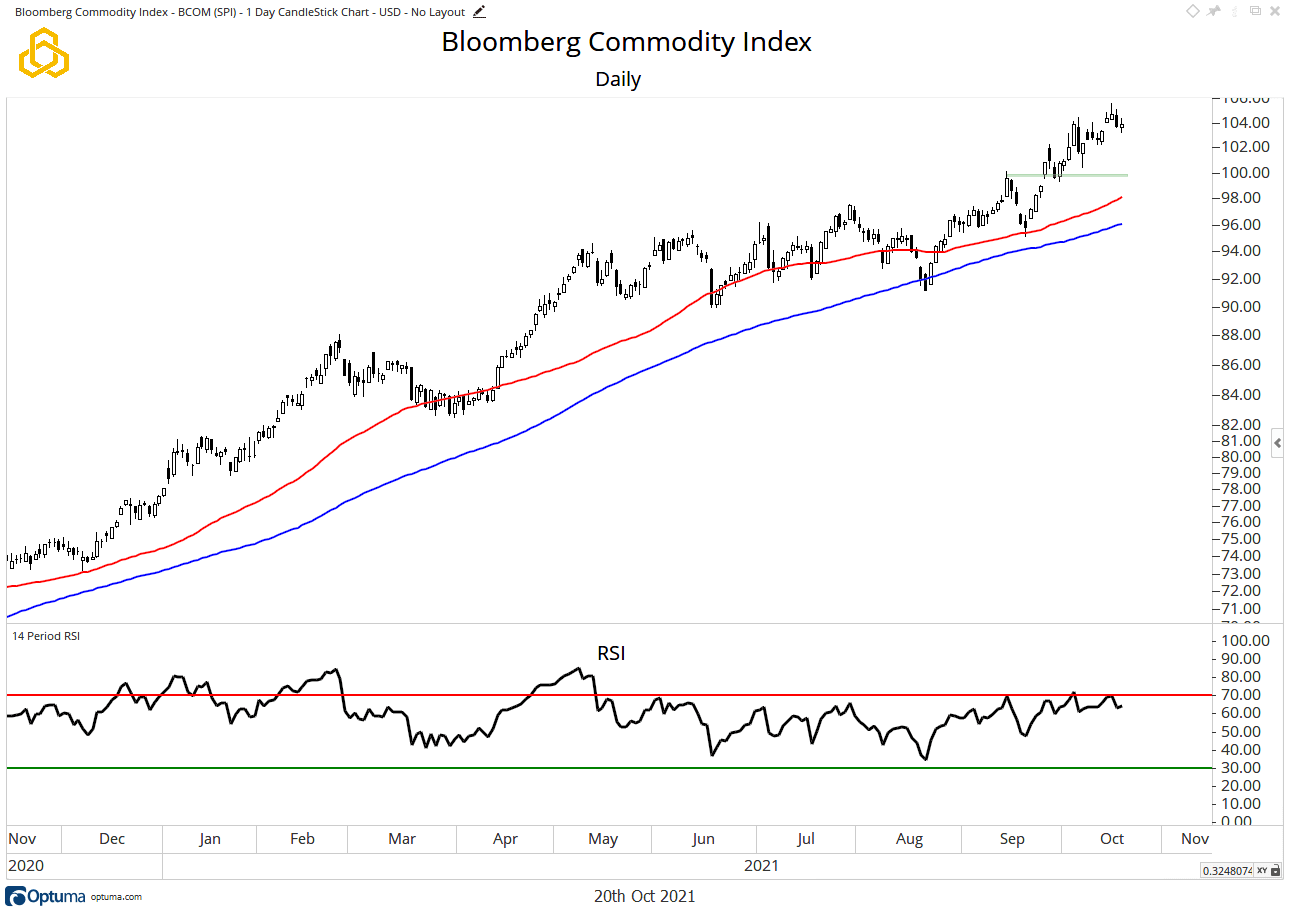
Within the commodity space, there is a clear trend in favor of reflation assets:
- Copper – a powerful break from the consolidation brings the March highs into play.
- Gold – stuck in a consolidation, the bulls must hold $1,700.
- Lumber* – bulls are in control despite a recent pause, upside to $850.
- Crude Oil – continues to power higher, running room to $90.
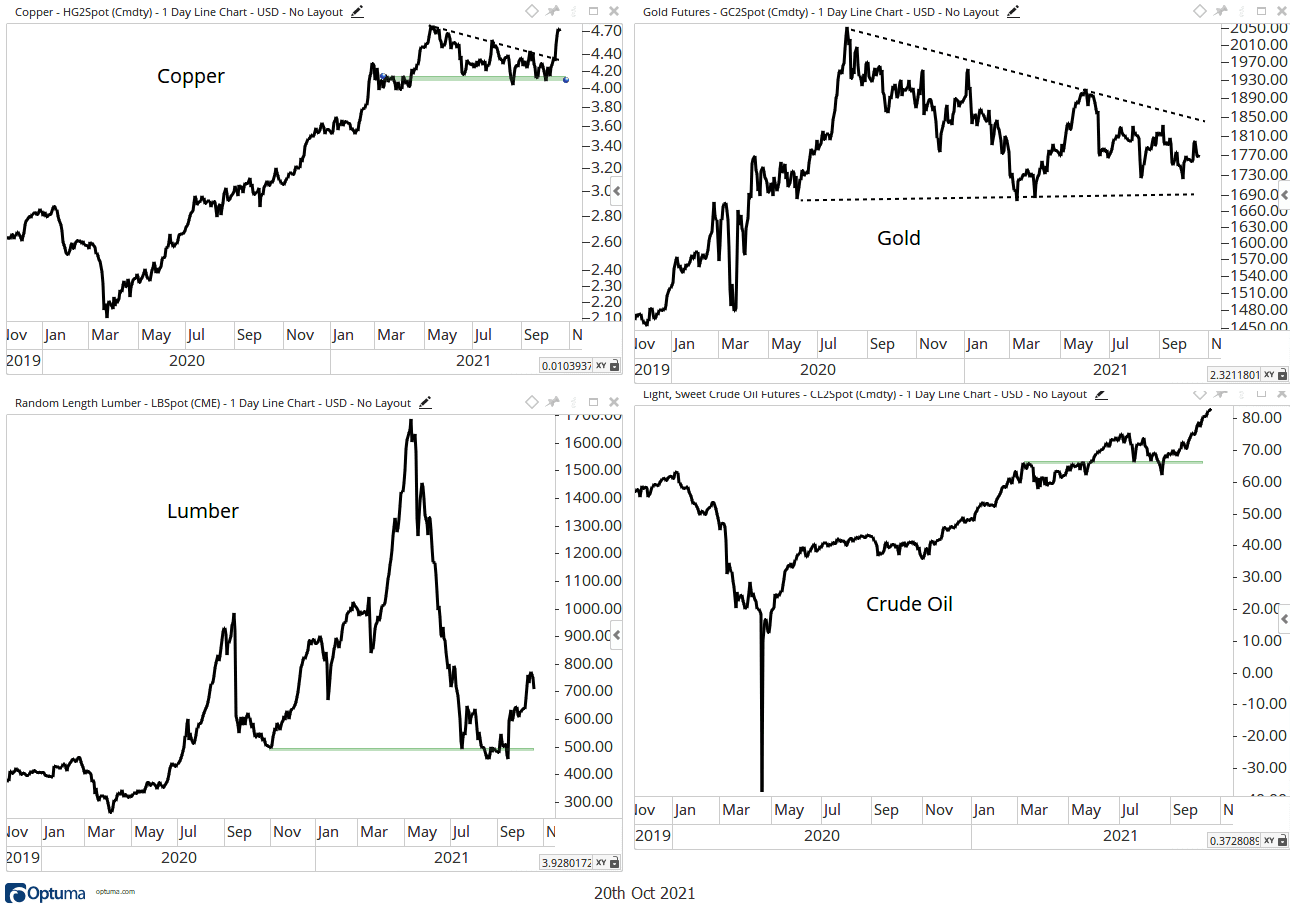
Sentiment Check
The CBOE Volatility Index (VIX) continues to move to the downside, signaling less fear in the equity market over the past two weeks. The mid-September spike was quickly reversed after making another lower high. This trend has been in place for much of the year; flare-ups in the VIX have not had much staying power. For now, it appears that the July lows are in play.
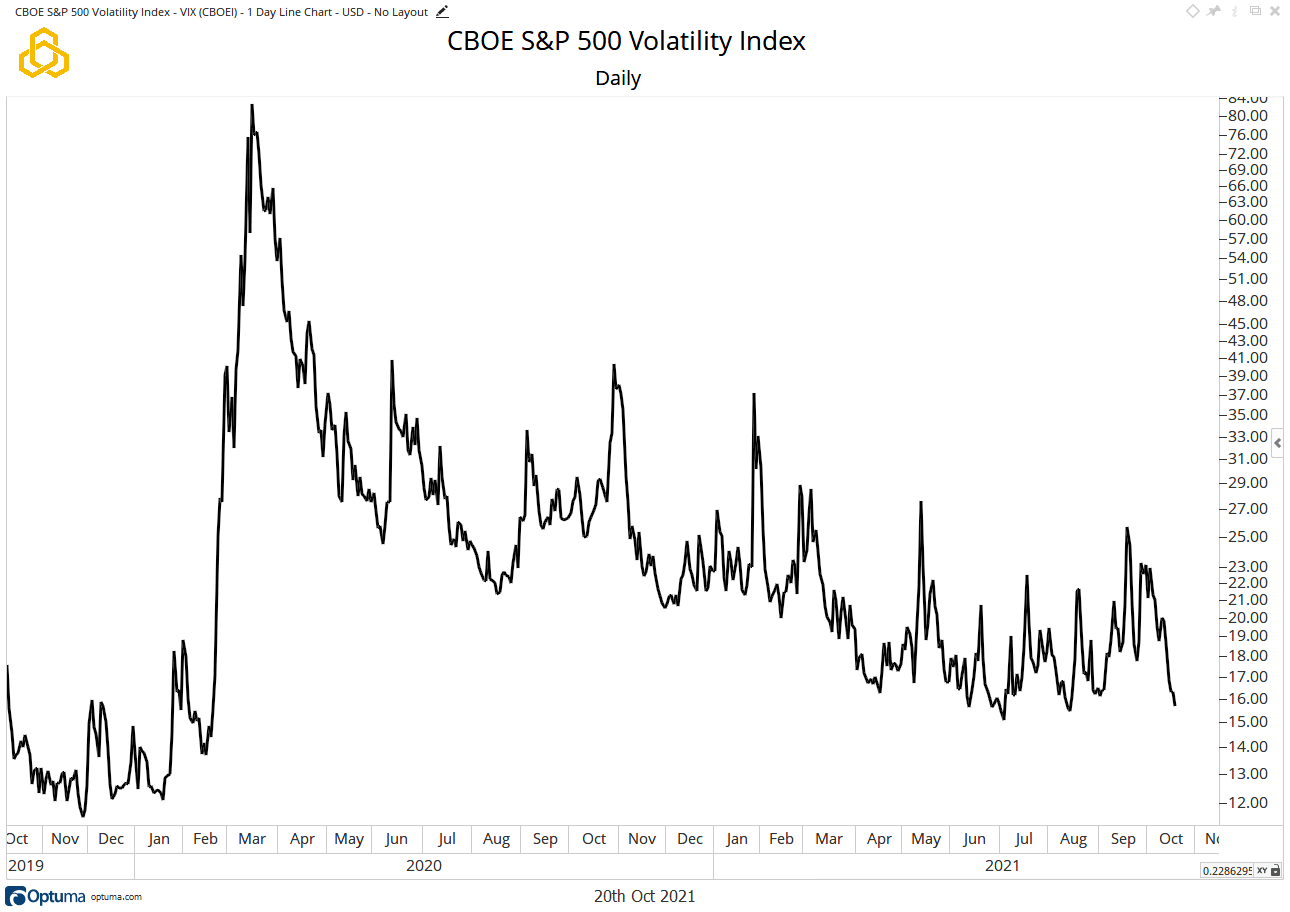
It didn’t take much to change investors’ moods. The CNN Fear & Greed Index has moved from a “fear” reading of 32 last week into the “greed’ zone, clocking in at 62 this week. While this metric is not screaming “run the other way,” it is no longer in a position where it can be considered a contrarian tailwind for the market.
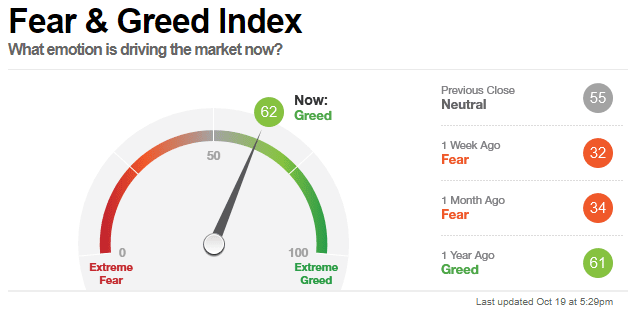
Take-Aways:
The bears fumbled the ball. They had a golden opportunity to push stocks lower, but the S&P 500 and the NASDAQ 100 have staged rebounds from their 100-day moving averages to break their short-term downtrends. New highs are now on the table. The NASDAQ 100 is testing relative resistance as Small Caps test relative support at their 50-day moving averages; will we see yet another rotation this year? The 10-Year Note may provide a clue as it breaks down, sending rates higher, which should be a headwind for the NASDAQ 100. Commodities remain strong but may need a pause.
Sentiment turns more greedy than fearful as stocks move higher.
Disclosure: This information is prepared for general information only and should not be considered as individual investment advice nor as a solicitation to buy or offer to sell any securities. This material does not constitute any representation as to the suitability or appropriateness of any investment advisory program or security. Please visit our FULL DISCLOSURE page.
